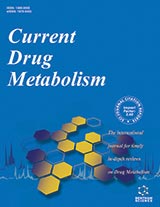Abstract
Introduction: Drug treatment may be related to the development of adverse drug reactions (ADRs).
Aim: In this paper, we evaluated the ADRs in patients admitted to Catanzaro Hospital.
Methods: After we obtained the approval by local Ethical Committee, we performed a retrospective study on clinical records from March 01, 2013 to April 30, 2015. The association between drug and ADR or between drug and drug-drug-interactions (DDIs) was evaluated using the Naranjo's probability scale and Drug Interaction Probability Scale (DIPS), respectively.
Results: During the study period, we analyzed 2870 clinical records containing a total of 11,138 prescriptions, and we documented the development of 770 ADRs. The time of hospitalization was significantly higher (P<0.05) in women with ADRs (12.6 ± 1.2 days) with respect to men (11.8± 0.83 days). Using the Naranjo score, we documented a probable association in 78% of these reactions, while DIPS revealed that about 22% of ADRs were related to DDIs. Patients with ADRs received 3052 prescriptions on 11,138 (27.4%) having a mean of 6.1±0.29 drugs that was significantly higher (P<0.01) with respect to patients not experiencing ADRs (mean of 3.4±0.13 drugs). About 19% of ADRs were not diagnosed and were treated as new diseases.
Conclusion: Our results indicate that drug administration induces the development of ADRs also during the hospitalization, particularly in elderly women. Moreover, we also documented that ADRs in some patients are under-diagnosed, therefore, it is important to motivate healthcare to report the ADRs in order to optimize the patients' safety.
Keywords: Retrospective study, clinical records, pharmacovigilance, adverse drug reactions, drug-drug Interactions, patients.
Graphical Abstract





























